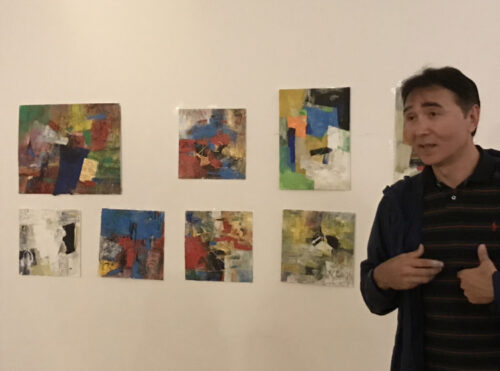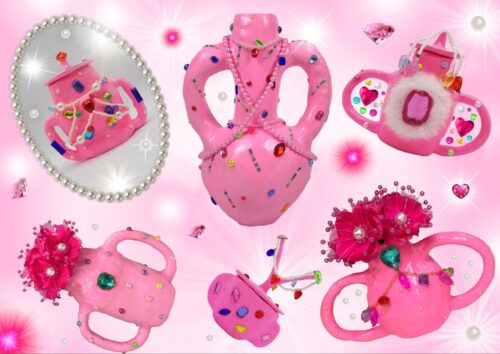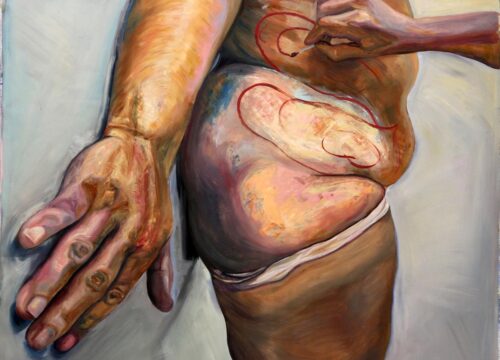Interrogating the present with artist Cao Fei
In her first major solo show in China, a retrospective hosted by the UCCA in Beijing’s 798 Art Zone, the prominent multimedia artist entices us to consider questions of technology, identity, and progress.
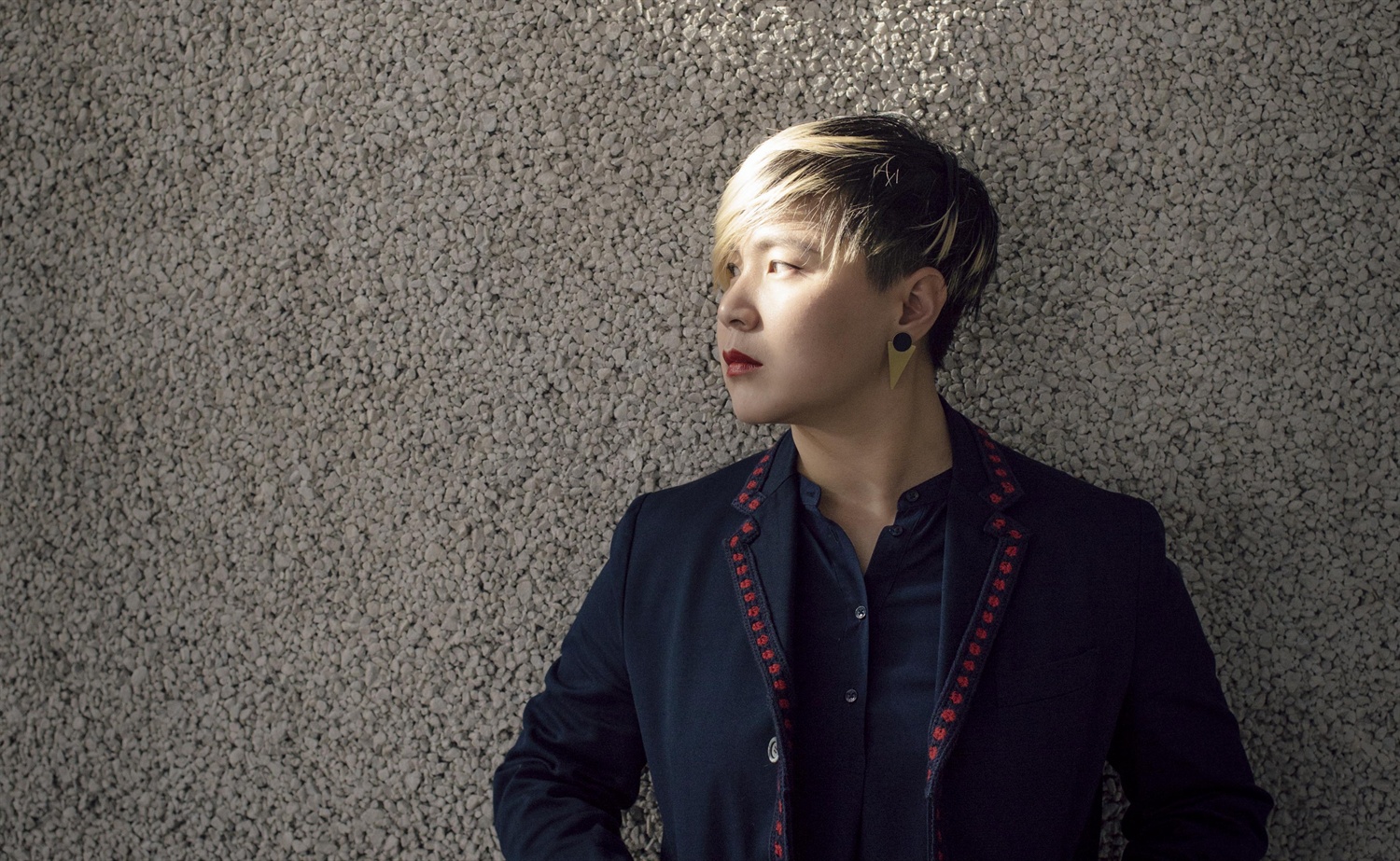
Sometimes it requires the unconventional eye of an artist to make sense of the world we inhabit. Over past decades, Cáo Fěi 曹斐 has sought, through her work, to encapsulate the breakneck changes that have taken place in her native China and across the globe.
In her largest retrospective to date — and her first ever major solo show in China — Cao will present the domestic audience with a comprehensive exhibition of her artistic career, opening to the public today at the UCCA Center for Contemporary Art. Her work documents “both the enthusiasm and uncertainty that people go through in modern China,” she told me.
Entitled Staging the Era (时代舞台 shídài wǔtái), the show aims to examine the defining features of the present moment, ranging from long-term trends of digitalization and China’s meteoric rise to the forefront of global affairs to more immediate phenomena such as the ongoing pandemic.
Cao, who has been described by UCCA director Philip Tinari as “the archetype of her generation,” was born in Guangzhou in 1978, the daughter of a respected sculptor. In her youth, she was surrounded by the exhilarating and optimistic environment of a China opening to the world under Dèng Xiǎopíng’s 邓小平 economic reforms, which initially centered on her native Guangdong province.
Much of the artist’s work grapples with the effects that rapid urbanization and development have had on traditional society and on the individual. As the Chinese economy bloomed following the country’s 2001 accession to the WTO, city landscapes pushed outwards into the countryside, pitting 21st-century modernity against ancient agrarian cultures. In 2003, Cao and Chinese filmmaker Ōu Níng 欧宁 captured this mélange of old and new with the experimental documentary San Yuan Li, which explores the underbelly of Guangzhou’s urban expansion.
Another of Cao Fei’s most celebrated projects is RMB City (2007-2021), an ongoing virtual representation of the Chinese urban landscape. Brimming with penetrating references and subtle visual metaphors, the detailed digital model is at once aesthetically stunning and conceptually intriguing. Viewers are guided by China Tracy, the online avatar of Cao herself, as they explore the surreal metropolitan expanse. The work poses questions about the past and future of urban planning in China, as well as the real and virtual lives of city dwellers.

Many of the themes and moods that provided the creative impetus for Cao’s early work — globalization, openness, optimism, individualism — have begun to wane in recent years. Art censorship in China, which has become more draconian under the current government, increasingly complicates the staging of major art exhibitions due to the rigorous bureaucratic process required to approve content for display.
In 2019, authorities called off an exhibition at the UCCA for Chinese-American painter Hung Liu, sparking observations that the permissible space for cultural expression in the country was shrinking. As China’s domestic contemporary art scene continues to benefit from more international investment and collaborations, as witnessed by France’s Centre Pompidou opening a new venture in Shanghai’s West Bund art district, issues of artistic freedom in the country remain to be addressed.
Cao Fei’s works and the critiques they contain, however, are rarely direct. Her characteristically opaque and surreal style allows viewers to interpret the underlying messages without needing to state them explicitly. The domestic audience is “much more familiar with the contexts I address within my practice,” Cao says, adding that she is curious to see the reaction to her show.
Pervading much of her work is an interest, and often skepticism, in technology and its ever-increasing integration into human society and the lives of individuals. A 2006 film titled Whose Utopia begins with a mesmerizing montage of lightbulb production at a factory in the Guangzhou suburb of Foshan, before turning the lens on the facility’s human employees. The project poignantly juxtaposes the heartfelt aspirations of individuals with their own assimilation into mechanized systems of capitalist production.
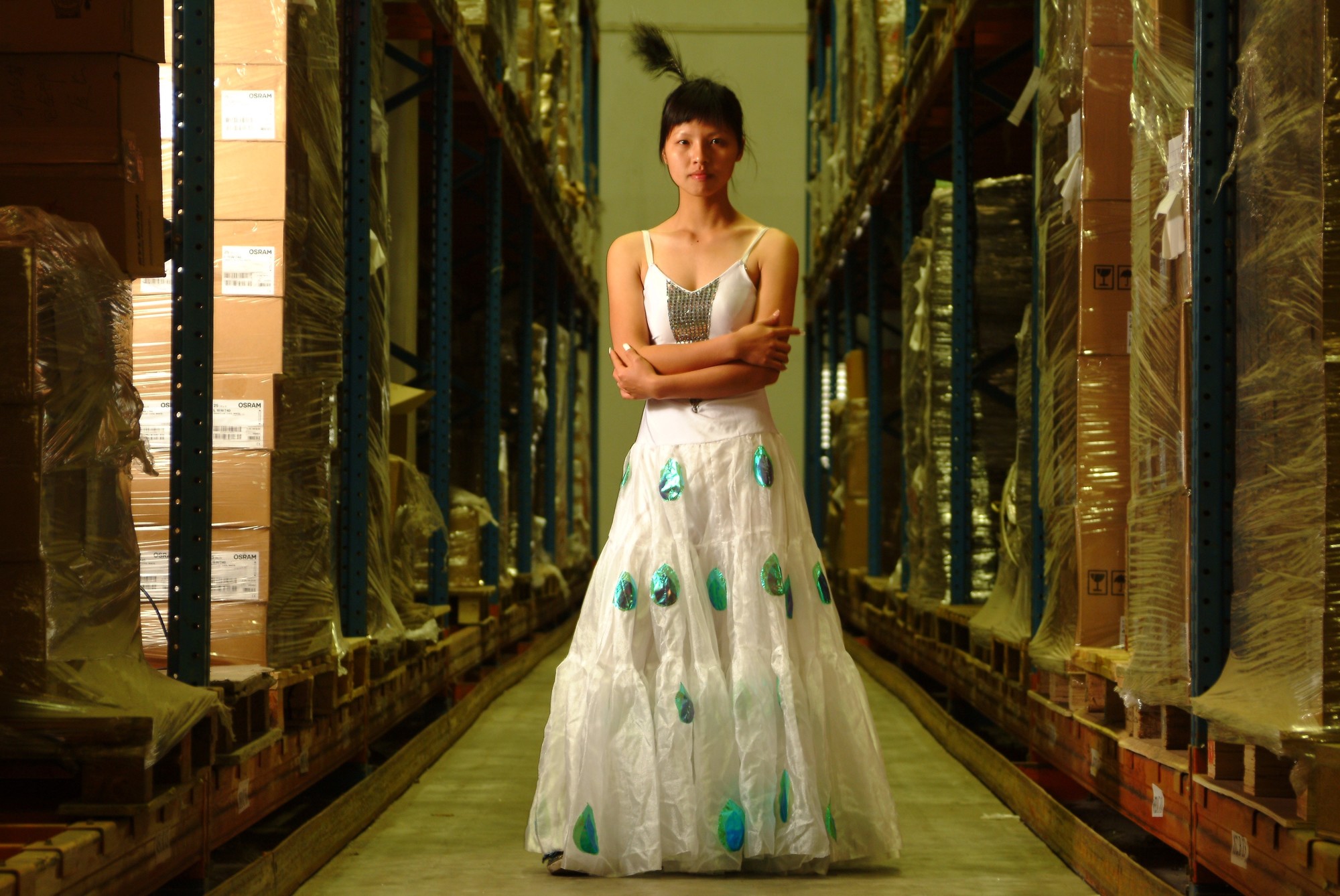
Although Cao Fei’s art is often critical of technology, she paradoxically embraces digital media as a new channel for creative expression. In a project called Rumba, first actualized in 2015, autonomous vacuum cleaners wander a demolition zone via random algorithmic instructions, offering a commentary on urban life in the digital era. According to a statement from the artist, the bulldozed landscape represents “a scene that is both exciting as well as the new norm within a rapidly changing Chinese society.”
Cao has also seized on a widespread recent trend in which artists employ augmented reality (AR) technologies as a medium for their work. Featured on the Acute Art app, and sharing space with prominent names such as Danish-Icelandic artist Olafur Eliasson and pop artist KAWS, the 2020 project Eternal Wave represents one of her many incursions into the realm of AR.
When a solo exhibition at London’s Serpentine Gallery closed to the public in response to the coronavirus outbreak, the app enabled smartphone users to view an animated portion of Cao Fei’s show from the comfort of their own living rooms and backyards.

The UCCA retrospective will also showcase some of the artist’s past collaborations with various high-end corporations. In 2017, BMW commissioned Cao Fei to design a vehicle for the company, the 18th in a popular line of “Art Car” creations. Her creation, a completely black car that required viewers to use an AR app to reveal a colorful design in a virtual second life, ignited a renewed level of interest in the series.
In another high-profile collaboration, Cao Fei worked with Prada and Chinese pop star Cài Xúkūn 蔡徐坤 to produce Code Human, which includes surreal and dystopian imagery of a future world. The work, which contributes to Cao’s ongoing commentary regarding technology and its effects on society, deals with the issues of image worship and celebrity in the social media age.
China, Cao Fei says, contains a “multifaceted digital ecosystem that touches every aspect of the society,” adding that people in the country tend to understand technology primarily through “endless social media feeds and playing online games.” For this reason, she contends, it will be fascinating to see how her work is received by the local audience.
The themes involved in the artist’s work are as expansive as they are thought-provoking. The UCCA retrospective, which includes dozens of projects spanning the full breadth of her artistic career, will offer viewers the chance to reflect upon and attain a deeper understanding of modern life in China and the digital realm.
Cao Fei’s Staging the Era will run at UCCA in Beijing from today until June 6.


